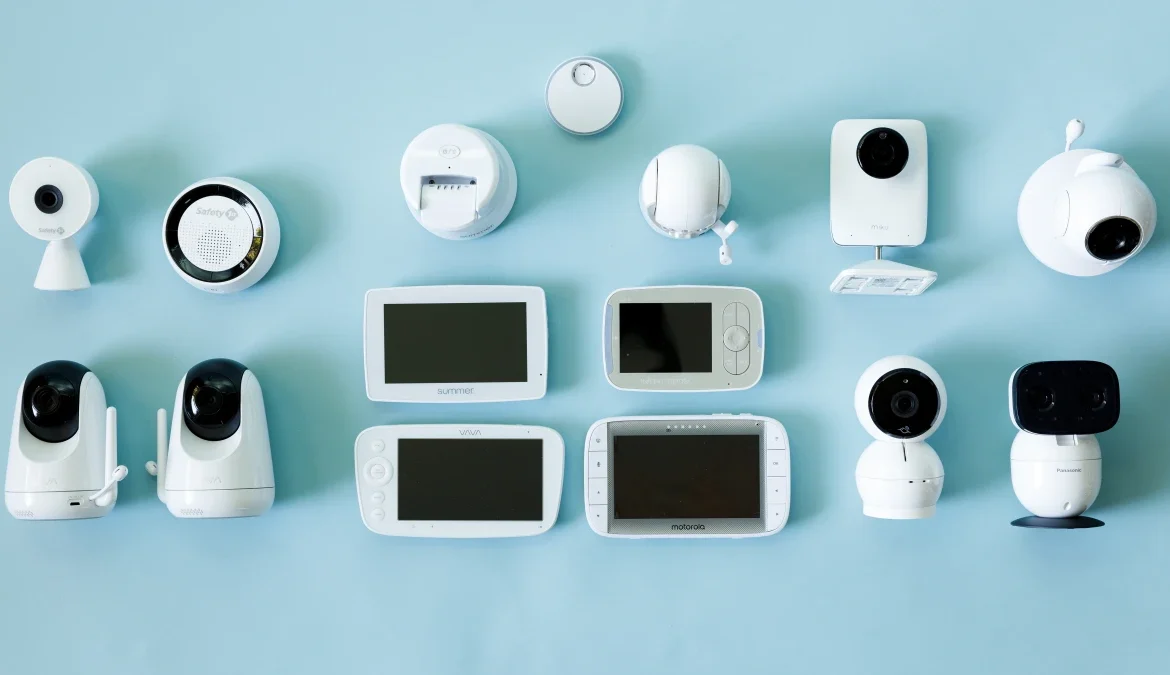
How to Choose the Right Baby Monitor
In the span of a few years, baby monitor shopping turned from a basic process of choosing from limited models to staring down hundreds of competent devices, not knowing which to buy.
We have the constantly evolving technologies to thank for that, as new features arise every day, and brands compete to bring them to your table. Some people appreciate having endless choices, but I think it makes shopping a tall order. That’s why I decided to help you with this guide!
I’ll tell you how to choose the right baby monitor for your child, including what features to look for and to ditch, all from experience!
Types of Baby Monitors: Which One Is the Right Fit for You?
There are many types of baby monitors on the market, each one serving a specific purpose. Here’s a detailed roundup of them to help you know the right fit for you.
1. Audio-Only Monitors
Audio-only monitors are the oldest and most basic form of baby monitors. They only transmit sounds from your baby’s room, not images, making them not as famous as the other types.
These monitors come in two parts, a pickup device that you place in your baby’s room and a receiver that you carry around. When your baby wakes up and cries, you’ll hear the sound through the receiver and get up.
While audio-only monitors have more appealing price tags and longer battery life than all of the other types, I don’t prefer them. When babies grow older and start moving around, they wake up in silence for a few minutes before crying. In those minutes, they can move dangerously, and you won’t know.
In my opinion, these monitors are only suitable for the first six months of a baby’s life, as they don’t move and rarely wake up silently.
2. WiFi Video Monitors
WiFi video monitors transmit both sounds and visual images, making them the most favorable type on the market. They operate on your house’s WiFi and transmit audio and images through an application on your smartphone, which acts as a receiver unit. That’s why the package comes carrying a pickup unit only, which is a camera and audio recorder at the same time.
While WiFi monitors pack a lot of pros, including an unlimited distance range and easy access through your phone, they’re not my favorite type, and I’ll tell you why.
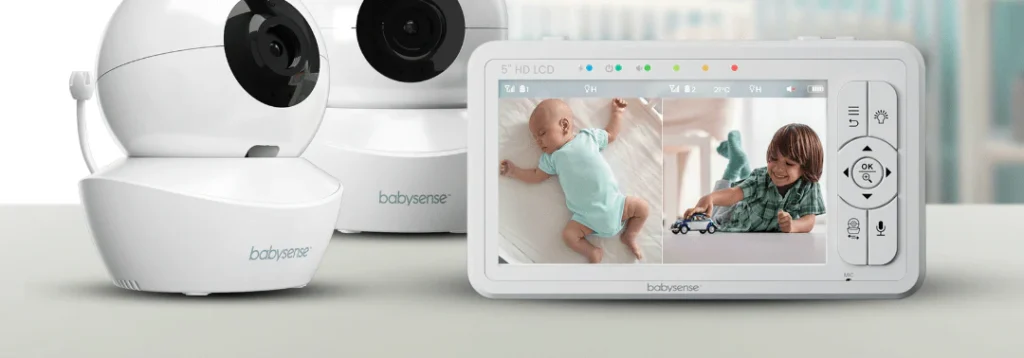
First off, using your phone as a monitor means you’ll have to keep it in use for as long as your baby is sleeping, which will drain its battery and shorten its life. Second, these monitors don’t work without a stable WiFi connection, which you might not be able to provide 24/7.
In my opinion, you should only get one if you want more freedom of movement while your baby is sleeping, as you can leave the house and still keep an eye on the little bundle of joy.
3. Non-WiFi Video Monitors
Non-WiFi video monitors deliver both audio and visual images, but unlike their counterparts, they don’t need an internet connection to work. This feature makes them perfect for use in places where the internet connection is weak, or power outages are common.
These monitors come in two pieces, a camera unit to record your baby while sleeping and a small display where you can watch. As a bonus, some displays show you a few metrics, like time and the temperature in your baby’s room. Also, some cameras come with night vision, which lets you watch your baby without turning the light on.
Generally, non-WiFi monitors are my favorite of all types. They’re insanely practical because you can both hear and see your baby once they wake up. This feature is ideal for babies older than 7-8 months because they often try to roll and move around on the bed after waking up, which can be dangerous.
The only catch is that they have short battery lives, which you can easily handle.
4. Movement Monitors
Movement monitors are a special type of monitor designed to detect babies’ movements while sleeping.
They track many health vitals, including heart rate, breathing rate, and stillness, making them a top priority for parents with ill babies. Some of them are wearable around a baby’s ankle, while some are placed under the mattress where your child is sleeping.
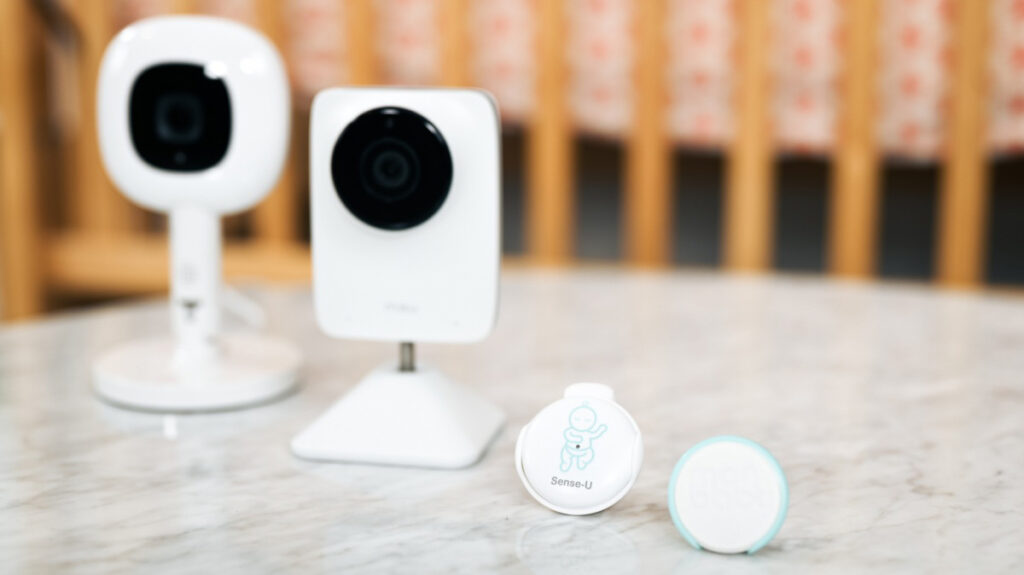
The idea is to detect a child’s weight, and if there are no movements for a long time, the monitor will send the parents an alert. It’s an important feature in the case of babies with breathing problems or any health concerns in general. However, I don’t think that movement monitors are practical for all parents.
Since they don’t transmit audio and visuals like other monitors, you’ll have to buy another unit that lets you see your baby while sleeping. Also, they send a lot of false alarms if a child rolls on the bed away from the monitor’s placement.
Factors You Should Consider Before Buying a Baby Monitor
Now that you know which type of monitor you need to buy, let’s get into deeper details!
Distance Range
This feature is limited to non-WiFi and audio-only monitors, but it’s an important one to consider, especially if you have a large house.
Suppose your nursery is too far away from the bedroom or living room. You’ll need a monitor that can transmit audio and visuals from this far distance. You should also consider that the thicker the walls in your house, the better range you’ll need.
Adjustable Camera
Some video monitors come with cameras that you can adjust to a certain angle, which is an ideal feature if your baby doesn’t sleep in the same place every day.
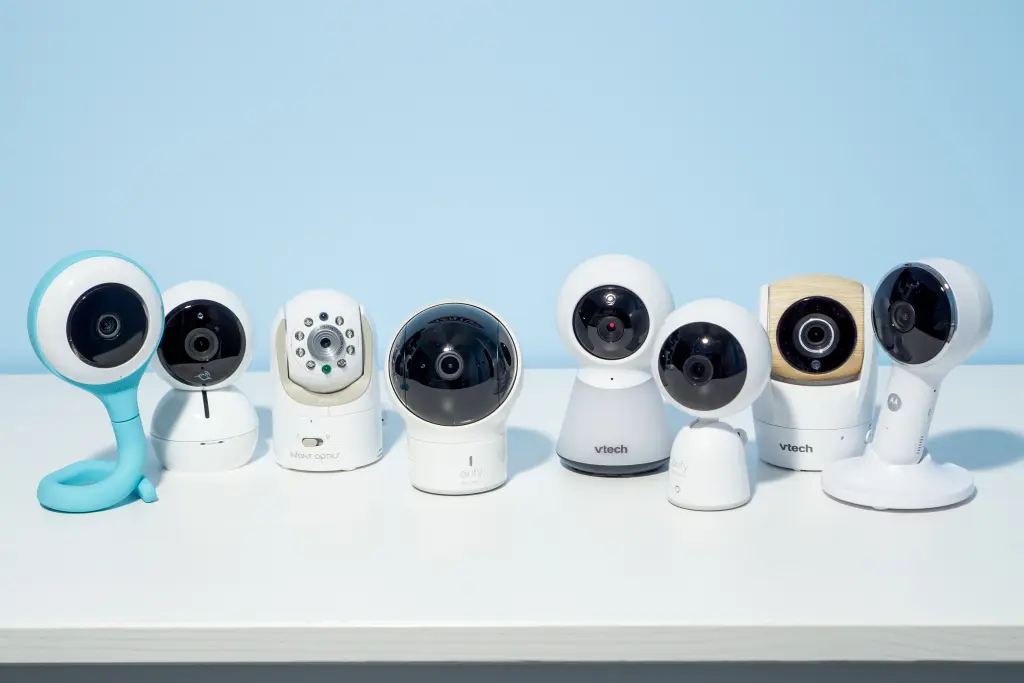
Suppose they sometimes sleep on the couch and sometimes on the bed, which have different heights. You’ll be able to put the camera anywhere, even on the floor, and adjust its angle to where your baby is.
On the other hand, non-adjustable cameras need to be mounted on a high object and placed right in front of your baby, which might not always be convenient.
All-Night Battery Life
If your baby doesn’t sleep in the same room as you, you’ll need a monitor with a battery that can last the whole night. Unfortunately, not all monitors in the market come with this privilege. Some need to be charged every few hours, which can be inconvenient.
Before buying a monitor, make sure to read online reviews about it to know whether it lasts the entire night or not.
Video Quality
Many monitors on the market deliver crisp audio quality but can’t do the same for videos. They give you a grainy image where you can’t see anything but vague movements. While you’ll still know when your baby wakes up, a high-quality image will be much easier on your eyes.
Also, you should check whether the monitor you’re buying delivers colored or white and black images. I personally don’t think this point makes a difference, but many people like to watch their babies in color and HD quality!
Number of Cameras
The majority of baby monitors come with one camera only, but suppose you have twins or triplets that sleep in different beds. If your monitor has one camera, you’ll need to buy another one so that you can keep an eye on your babies at the same time.
You’ll constantly shift your eyes from one display to another, which can be both tiring and inconvenient. Not to mention, buying two or three monitors instead of one will have a toll on your bank account!
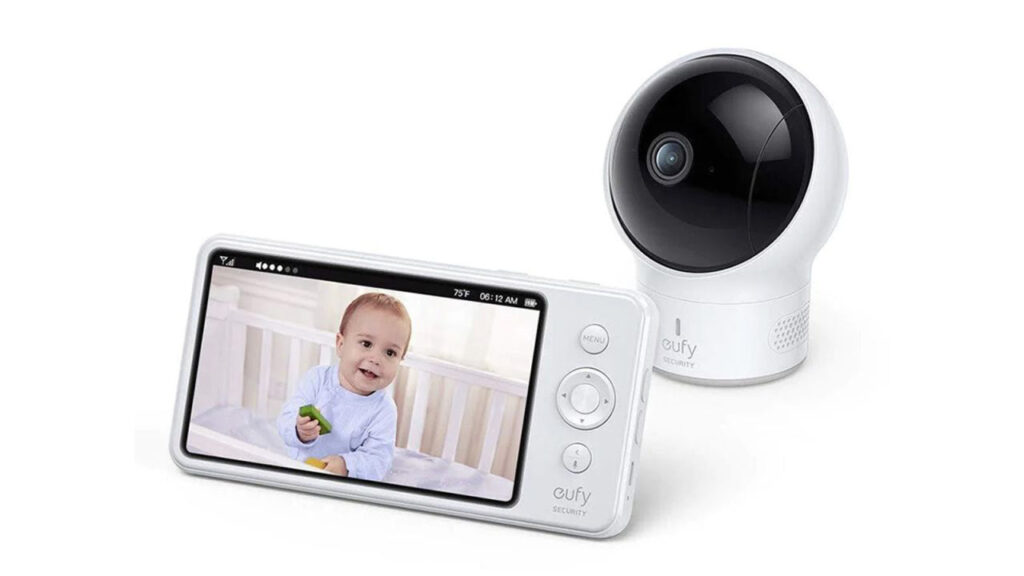
To avoid this issue, you can buy a monitor that comes with multiple cameras and delivers data to the same display. This way, you’ll mount a camera on each bed and watch all of your children on the same device.
While these monitors aren’t as common as other types and are often high-end, thus expensive, they’ll make your life easier than you can imagine.
Extra Features
Some of the best baby monitors on the market come with extra luxurious features that’ll make your life easier. The first one that comes to my mind is the talk-back functionality. This feature allows you to talk to your baby through the monitor, which is pretty convenient if you want to sing them a lullaby without getting up!
Speaking of lullabies, some monitors can play calming music and white noise for your baby to help them sleep faster. While using this feature a lot will drain the monitor’s battery faster, it makes nap time a piece of cake.
Common Questions Moms Ask!
When Should I Start Using a Baby Monitor?
I started using a baby monitor days after my child was born, but it was a bit unnecessary since kids this age cry loud and don’t move, so there’s no danger of falling. You’ll absolutely need to use a monitor starting from six months because this is usually when babies start to roll and move. Whether you use one before that is up to you!
Are WiFi Baby Monitors Safe?
I wouldn’t worry too much, but I also wouldn’t say they’re completely safe. Since these monitors connect to your house’s WiFi, they’re prone to data hacking if someone decides to steal your internet. However, WiFi hacking isn’t common in all neighborhoods, so it might not be a danger at all in your area.
Do I Need to Get a Baby Monitor?
Baby monitors aren’t equally important to every parent out there. If you have a small house and are guaranteed to hear your baby when they wake up, then you can live without it. However, if your house is large enough that you don’t hear all the noises, it’s best if you get one.
To Wrap Up
When buying a baby monitor, you should settle on the type you want first. You have three main types to choose from, audio-only, WiFi video, and non-WiFi video, and one additional type if your baby has special needs, movement monitors.
After that, you need to consider factors like the monitor’s distance range, camera adjustability, battery life, and video quality. Keep these pointers in mind, and the shopping process will be a breeze!